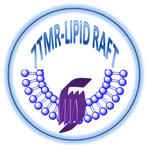Dopamine recruits D1A receptors to Na-K-ATPase-rich caveolar plasma membranes in rat renal proximal tubules.
| Title | Dopamine recruits D1A receptors to Na-K-ATPase-rich caveolar plasma membranes in rat renal proximal tubules. |
| Publication Type | Journal Article |
| Year of Publication | 2004 |
| Authors | Trivedi, M, Narkar VA, Hussain T, Lokhandwala MF |
| Journal | American journal of physiology. Renal physiology |
| Volume | 287 |
| Issue | 5 |
| Pagination | F921-31 |
| Date Published | 2004 Nov |
| ISSN | 1931-857X |
| Keywords | Animals, Benzazepines, Blotting, Western, Cell Membrane, Cyclic AMP, Dopamine, Dopamine Antagonists, Enzyme Inhibitors, Forskolin, GTP-Binding Proteins, Guanosine 5'-O-(3-Thiotriphosphate), Kidney Tubules, Proximal, Macrolides, Male, Microvilli, Precipitin Tests, Radioligand Assay, Rats, Rats, Sprague-Dawley, Receptors, Dopamine D1, Second Messenger Systems, Signal Transduction, Sodium-Hydrogen Antiporter, Sodium-Potassium-Exchanging ATPase |
| Abstract | Activation of dopamine D(1A) receptors in renal proximal tubules causes inhibition of sodium transporters (Na-K-ATPase and Na/H exchanger), leading to a decrease in sodium reabsorption. In addition to being localized on the plasma membrane, D(1A) receptors are mainly present in intracellular compartments under basal conditions. We observed, using [(3)H]SCH-23390 binding and immunoblotting, that dopamine recruits D(1A) receptors to the plasma membrane in rat renal proximal tubules. Furthermore, radioligand binding and/or immunoblotting experiments using pharmacological modulators showed that dopamine-induced D(1A) receptor recruitment requires activation of cell surface D(1)-like receptors, activation of adenylyl cyclase, and intact endocytic vesicles with internal acidic pH. A key finding of this study was that these recruited D(1A) receptors were functional because they potentiated dopamine-induced [(35)S]GTPgammaS binding, cAMP accumulation, and Na-K-ATPase inhibition. Interestingly, dopamine increased immunoreactivity of D(1A) receptors specifically in caveolin-rich plasma membranes isolated by a sucrose density gradient. In support of this observation, coimmunoprecipitation studies showed that D(1A) receptors interacted with caveolin-2 in an agonist-dependent fashion. The caveolin-rich plasma membranes had a high content of the alpha(1)-subunit of Na-K-ATPase, which is a downstream target of D(1A) receptor signaling in proximal tubules. These results show that dopamine, via the D(1)-like receptor-adenylyl cyclase pathway, recruits D(1A) receptors to the plasma membrane. These newly recruited receptors couple to G proteins, increase cAMP, and participate in dopamine-mediated inhibition of Na-K-ATPase in proximal tubules. Moreover, dopamine-induced recruitment of D(1A) receptors to the caveolin-rich plasma membranes brings them in close proximity to targets such as Na-K-ATPase in proximal tubules of Sprague-Dawley rats. |
| Alternate Journal | Am. J. Physiol. Renal Physiol. |
